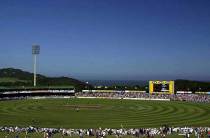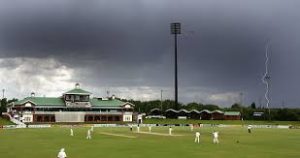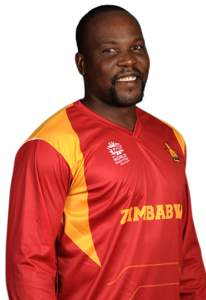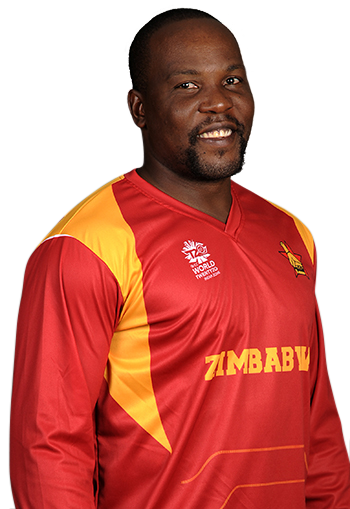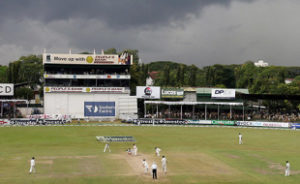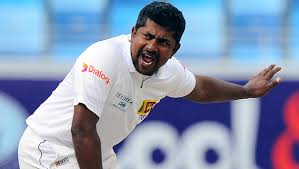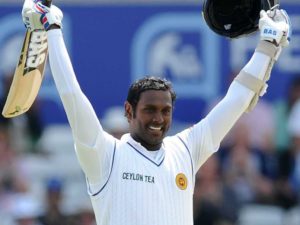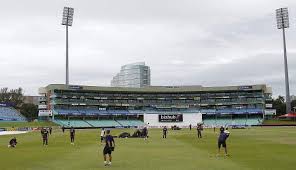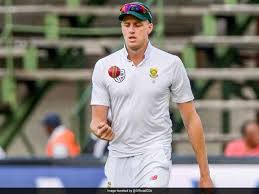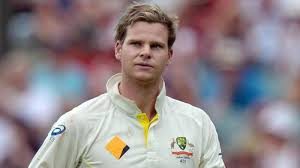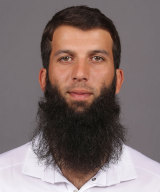This week, in the Dublin suburb of Malahide, Ireland will join an exclusive club, becoming just the eleventh side to play a full Men’s Test match, having been granted Full Member status by the ICC in June last year. When visitors Pakistan take to the field against William Porterfield’s team, they will welcome the first new Test team since 2000 when Bangladesh made their bow in the longest and most prestigious form of the international game.
Hopes are high that Ireland can cause an upset. They have a settled side packed with players with extensive international experience at ODI and T20I level and will hope that the swinging early season conditions will be unfamiliar to the visitors. If they do prevail, they will join an even more exclusive club of teams that have won their first Test. So far, only one team can claim to have done so.
To mark this historic event, I take at look at how each of the ten previous Test sides fared in their debut Test. In this first of two parts, I cover the maiden appearances at the top level of England, Australia, South Africa, the West Indies and New Zealand. Later, in Part Two, I will check out what happened when Test cricket expanded into the Indian Subcontinent and to Zimbabwe.
Test teams #1 and #2 – Australia and England.
First Test – Melbourne, Victoria – 15 March 1877
It was just over 141 years ago, on the 15 March 1877 in Melbourne, Victoria, that what became known as the first ever Test Match took place. The term “Test Match” didn’t exist at the time, and was only subsequently applied many years later, but this game is now universally accepted as the first official Test.
The venue for the inaugural contest was the venerable Melbourne Cricket Ground, meaning that the MCG – still in use today of course – can lay claim to being the oldest Test ground in the world.
The match was played between two representative sides – a team of professional cricketers, led by James Lilywhite Jr of Sussex, travelled by steamship from England to take on what was called at the time a Combined Australia XI, captained by Dave Gregory.
Australia as an independent nation did not exist in 1877 – nationhood would come with Federation in 1901 – and the players featuring in Gregory’s squad were drawn from the then separate British colonies of New South Wales and Victoria.
Neither side was at what would today be called full-strength. Lilywhite’s squad did not include any of the amateur players who at that time represented some of England’s finest cricketers, meaning the likes of WG Grace did not grace the MCG for this fixture. For the combined Australians the best bowler in the colonies – the feared speed-demon Fred Spofforth from New South Wales – refused to play in protest at the non-selection for the game of the NSW wicketkeeper Billy Murdoch.
The game itself was a timeless Test eventually played out over four days, with a rest day in the middle, and using four-ball overs. Underarm bowling was still a thing. Australia ran out winners by 45 runs, meaning Australia can lay claim to be the only team in cricket history to win their first Test match.
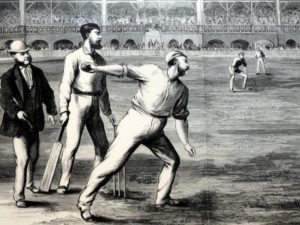
Above: A scene from cricket’s first Test at the MCG, March 1877.
Aside from its obvious historical significance as the first ever Test match, the game is best remembered for the exploits of Australia’s opening batsman, Charles Bannerman. Born in Woolwich, Kent, England but having moved down under as a child, Bannerman had the honour of scoring the first ever Test run and went on to make 165 in the first innings, before retiring hurt with a split index-finger. Thus, he became cricket’s first Test centurion. His score remains, over 140 years later, as the highest on debut for an Australian.
Furthermore, Bannerman’s 165 represented 67% of all the runs in Australia’s total first innings score of 245 – which again remains the world record for the highest individual contribution to a team Test innings score, some 2,302 completed Tests later. To this day, when a batsman is dominating an innings while his compatriots collapse around him, commentators and fans go on alert or “Bannerman-watch” to see if cricket’s longest standing record can be broken. All have failed so far, a suitable legacy for Test cricket’s first run scorer and centurion!
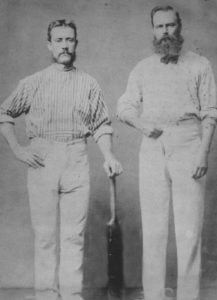
Above: Charles Bannerman (right) alongside Combined Australia XI captain Dave Gregory
For the record, the first Test wicket was taken by Yorkshire’s Allen Hill, who bowled Australia’s Nat Thomson for 1.
England would not have to wait long for their own first Test win. The MCG match had been scheduled to be a one-off, but it was such a commercial success that a second match was hastily arranged a couple of weeks later at the same venue. This time, Spofforth and Murdoch did play for the Combined Australians, meaning England’s win by 4 wickets was all -the-more impressive.
Test team #3 – South Africa.
First Test vs England at Port Elizabeth, 12 March 1889
For the next twelve years or so, Test cricket was played exclusively between England and Australia. It was not until March 1889, when the next team, South Africa, made its debut.
Much debate has raged since about whether the inaugural two game series between a visiting England side and the South Africans should be recognised as Tests – given that they were played out between sides of dubious quality and that no South African had ever played First Class cricket at the time – but the matches were indeed subsequently granted Test status in 1897 and are in the record books as such. Who am I to argue?
The representative England side that travelled to the Eastern Cape did include a few players who had previously played in Tests against Australia, including Bobby Abel, Johnny Briggs and George Ulyett – the latter having also played in the first ever Test 12 years earlier. The rest of the squad was made up of a few county players and a number of club cricketers such as the Hon. Charles Coventry who had not even played First Class cricket in England before, and would not do so subsequently.
Like Australia in 1877 before it, South Africa did not exist as an independent nation at the time of its Test bow in 1889, and the side was drawn from the separate colonies of Eastern Province, Western Province, Transvaal and Natal.
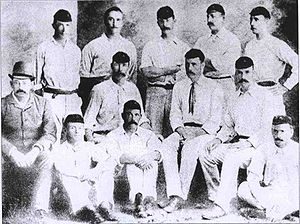
Above: The South Africa XI, 1889.
The first Test, billed at the time as “Major Warton’s XI versus a South Africa XI” took place at what is now St George’s Park in Port Elizabeth, Eastern Cape Province, using 4-ball overs. It was a low-scoring affair, with “England” running out winners by 8 wickets within two days. South Africa’s first Test runs were scored by home-town batsman Bernard Tancred, and their first wicket by fellow Port Elizabethan Gus Kempis, who bowled Ulyett for 4.
The South Africans fared even worse in the second Test in Cape Town, losing by an innings and 202 runs, having scored less than a hundred runs across their two innings. Indeed, it wouldn’t be for another 17 years, in their twelfth Test, that South Africa would finally claim its first Test win, versus the English in Johannesburg.
An interesting aside is that Sir Aubrey Smith, England’s captain in the first Test playing his one and only match for England, went on to moderate fame, but not as a cricketer. He instead became an actor, first on the stage in London’s West End and later in motion pictures in Los Angeles, where he died in 1948. He even starred alongside Elizabeth Taylor in one movie! By strange coincidence, the South Africa XI captain in Port Elizabeth, Owen Dunell, also passed away in a far-flung non-cricketing locale – Lyons in France in his case – although whether he appeared in any French movies is unknown!
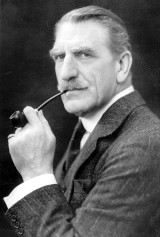
Above: Sir Aubrey Smith – England captain in 1889 and Hollywood movie star.
Test team #4 – West Indies.
First Test vs England at Lord’s, London – 23 June 1928
If the gap of twelve years between the first Test and South Africa’s debut seemed long, it was nothing in comparison to the wait for our next Test playing team. It was an astonishing 39 years before the next cab off the rank came along, the West Indies in June 1928. This gap remains a record in between debuts of Test teams.
Several touring representative sides from England had toured the Caribbean since the late 1880s, and likewise teams from the islands had visited England in the early 1900s, but it wasn’t until the West Indies Cricket Board was elected to the ICC (then standing for the Imperial Cricket Conference) in 1926 that the West Indies became eligible to play official Tests. New Zealand and India were also voted in to the ICC in 1926 but would have to wait slightly longer for their Test debuts.
The West Indies represented a collection of British Caribbean islands who were all in 1926 still part of the British Empire. They would later become the separate independent states of Barbados, Jamaica, Trinidad & Tobago and Guyana, although they continue to join forces alongside several other Caribbean nations and islands for international cricket purposes to this day.
Post acceptance as a member of the ICC, the West Indies were invited to tour England in the summer of 1928 for a three game Test series, with the first match taking place at the home of cricket, Lord’s starting on 23 June 1927.
Unlike the side put up against South Africa in 1889, England’s team was full of players of the highest quality – Wally Hammond and Herbert Sutcliffe to name but two – and it was not really a surprise that the West Indies were outplayed, losing by an innings and 58 runs. Similar innings defeats occurred in the remaining two Tests of the tour at Old Trafford and the Oval.
The first Test was also notable from an England perspective as it saw the debut of a certain Douglas Jardine, playing alongside a man with whom he was to become forever entwined in cricket folklore four years later in the Bodyline series in Australia, Nottinghamshire quick Harold Larwood.
For the West Indies, the series saw the start of the international career of arguably their first superstar, Trinidad’s Learie “Connie” Constantine, who took West Indies first ever Test wicket in England’s first innings and recorded impressive figures of 4/82. Constantine would go on to have a fabulous career as a club professional in England, leading Nelson to eight Lancashire league titles. He became Lord Constantine MBE and a freeman of Nelson.
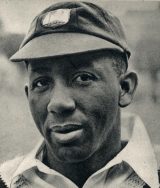
Above: Lord Learie “Connie” Constantine, MBE.
The West Indies fared much better when they hosted England in the Caribbean just two years later, drawing the first test in Bridgetown, Barbados and winning the third in Georgetown, British Guiana (now Guyana) in 1930, with the chief damage being done by Constantine. The West Indies duly had their first Test win in just their sixth Test.
Test team #5 – New Zealand.
First Test vs England at Christchurch, New Zealand – 10 January 1930
As mentioned above, New Zealand had been accepted as a member of the ICC in 1926, and duly became cricket’s fifth Test nation four years later when an England side visited for a four-game series.
Bizarrely, England also sent a touring side to the West Indies at exactly the same time as the New Zealand tour, meaning that the teams on both tours were severely depleted. For the New Zealand tour, only Frank Woolley with 55 caps had anything like an experienced career, and six England players were making their debuts. It didn’t help New Zealand though, as they were beaten by eight wickets in the first test which was held at Lancaster Park in that most English of New Zealand cities, Christchurch.
That first Test is perhaps best remembered statistically for Maurice Allom taking four wickets in five balls for England on debut, including a hat-trick, and for Matthew Henderson taking a wicket with his first ball for New Zealand in what would be his only appearance for his country. The New Zealanders also included two players – George Dickinson and Curly Page – who were dual sport internationals who also played for the country’s storied national rugby union team, the All Blacks.
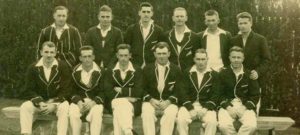
Above: The New Zealand Test team, 1930.
The rest of the Test matches in the series, held in Wellington and Auckland, were drawn. The Kiwis would go on to have the longest and most agonisingly drawn out wait for a first Test win of all nations – astonishingly not winning a match until their 45th Test match in 1956, 26 years after admission to the top table of cricketing nations.
Coming soon in Part Two – the test debuts of India, Pakistan, Sri Lanka, Zimbabwe and Bangladesh.
